DRAG DROP You are implementing conditional access policies. You must evaluate the existing Azure Active Directory (Azure AD) risk events and risk levels to configure and implement the policies. You need to identify the risk level of the following risk events: Users with leaked credentials Impossible travel to atypical locations Sign ins from IP addresses with suspicious activity Which level should you identify for each risk event? To answer, drag the appropriate levels to the correct risk events. Each level may be used once, more than once, or not at all. You may need to drag the split bar between panes or scroll to view content. 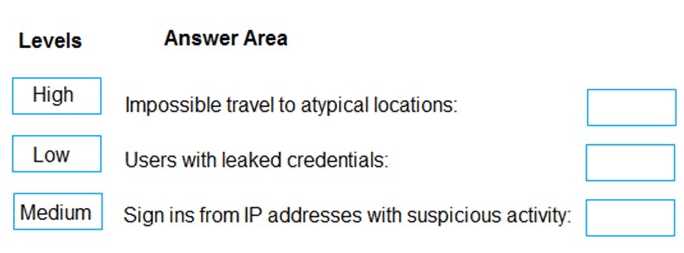
Microsoft Azure AZ-500 Exam Questions 2025
Our AZ-500 Exam Questions provide authentic, up-to-date content for the Microsoft Certified: Azure Security Engineer Associate certification. Each question is reviewed by certified Microsoft professionals and includes verified answers with clear explanations to enhance your understanding of Azure security, threat management, and cloud protection. With access to our exam simulator, you can practice in a real exam environment and confidently prepare to pass on your first attempt.
All the questions are reviewed by Laura Brett who is a AZ-500 certified professional working with Cert Empire.
Exam Questions
AZ-500.pdf
DRAG DROP You have an Azure Sentinel workspace that has an Azure Active Directory (Azure AD) data connector. You are threat hunting suspicious traffic from a specific IP address. You need to annotate an intermediate event stored in the workspace and be able to reference the IP address when navigating through the investigation graph. Which three actions should you perform in sequence? To answer, move the appropriate actions from the list of actions to the answer area and arrange them in the correct order.
You have an Azure subscription that contains an Azure App Services web app named WebApp1. WebApp1 is accessed by users in multiple Azure regions. You need to secure access to WebApp1. The solution must meet the following requirements:
* Protect against common web vulnerabilities.
* Optimize the routing of traffic from different regions.
What should you use?
HOTSPOT You have an Azure subscription that contains the Azure Firewall policies shown in the following table. 


You have an Azure AD tenant. You plan to implement an authentication solution to meet the following requirements:
• Require number matching.
• Display the geographical location when signing in.
Which authentication method should you include in the solution?
HOTSPOT You have an Azure subscription that contains a storage account named storage1 and several virtual machines. The storage account and virtual machines are in the same Azure region. The network configurations of the virtual machines are shown in the following table. 

DRAG DROP Note: This question is part of a series of questions that present the same scenario. Each question in the series contains a unique solution that might meet the stated goals. Some question sets might have more than one correct solution, while others might not have a correct solution. After you answer a question in this section, you will NOT be able to return to it. As a result, these questions will not appear in the review screen. You have an Azure Subscription named Sub1. Sub1 contains an Azure virtual machine named VM1 that runs Windows Server 2016. You need to encrypt VM1 disks by using Azure Disk Encryption. Which three actions should you perform in sequence? To answer, move the appropriate actions from the list of actions to the answer area and arrange them in the correct order.
 Which resources support the creation of a rotation policy?
Which resources support the creation of a rotation policy?DRAG DROP You create an Azure subscription. You need to ensure that you can use Azure Active Directory (Azure AD) Privileged Identity Management (PIM) to secure Azure AD roles. Which three actions should you perform in sequence? To answer, move the appropriate actions from the list of actions to the answer area and arrange them in the correct order.
 Which accounts will be listed as assigned to highly privileged roles on the Azure AD insights tab in
the Entra Permissions Management portal?
Which accounts will be listed as assigned to highly privileged roles on the Azure AD insights tab in
the Entra Permissions Management portal?About AZ-500 Exam
What is the Microsoft Azure AZ-500?
The Microsoft Azure AZ-500 exam, also known as Microsoft Certified: Azure Security Engineer Associate, validates your skills in managing and securing Azure environments. It’s designed for IT professionals who want to prove their ability to implement, manage, and monitor security solutions across Azure cloud services.
Passing the AZ-500 shows that you can protect identities, manage access, and safeguard data, applications, and networks in Azure. It’s a must-have certification for cloud security professionals.
Exam Snapshot
|
Exam Detail |
Description |
|
Exam Code |
AZ-500 |
|
Exam Name |
Microsoft Azure Security Technologies |
|
Vendor |
Microsoft |
|
Version / Year |
Latest version (2025) |
|
Average Salary |
USD $95,000 – $120,000 annually |
|
Cost |
$165 USD (varies by region) |
|
Exam Format |
Multiple Choice, Drag and Drop, Case Studies |
|
Duration (minutes) |
120 minutes |
|
Delivery Method |
Online / Test Center (Pearson VUE) |
|
Languages |
English, Japanese, Korean, Simplified Chinese |
|
Scoring Method |
Scaled score between 1–1000 |
|
Passing Score |
700 |
|
Prerequisites |
Basic Azure knowledge and understanding of security concepts |
|
Retake Policy |
24-hour wait after first attempt; 14 days for subsequent attempts |
|
Target Audience |
Cloud Security Engineers, Azure Administrators, IT Security Professionals |
|
Certification Validity |
1 year (renewable for free) |
|
Release Date |
2019 (latest updates 2025) |
What is the Microsoft AZ-500 Exam, and What Will You Learn From It?
The AZ-500 exam helps you gain and validate practical skills to:
- Secure Azure identities and access management
- Implement robust security controls
- Protect hybrid cloud environments
- Manage security operations using Azure Security Center and Sentinel
- Respond to threats with automation and monitoring tools
You’ll finish this certification ready to defend Azure workloads from modern threats.
Prerequisites Before Taking the AZ-500 Exam
Before attempting AZ-500, you should:
- Have experience with Azure services and workloads
- Understand networking, virtualization, and identity management
- Be familiar with Microsoft 365 security concepts
- Ideally hold the AZ-104 (Azure Administrator Associate) certification
Main Objectives and Domains You Will Study for AZ-500
The AZ-500 exam measures your ability to implement security controls across four major domains:
1. Manage Identity and Access (25–30%)
- Manage Azure AD identities and roles
- Secure access using MFA and Conditional Access
- Configure RBAC and Privileged Identity Management (PIM)
2. Secure Networking (20–25%)
- Implement perimeter security (NSGs, Azure Firewall)
- Configure Azure DDoS protection
- Secure hybrid connectivity and VPN configurations
3. Secure Compute, Storage, and Databases (25–30%)
- Implement endpoint protection
- Secure Azure resources with encryption
- Configure managed identities and storage access policies
4. Manage Security Operations (20–25%)
- Monitor security using Microsoft Defender for Cloud
- Respond to threats with Azure Sentinel
- Automate security responses using Logic Apps
Changes in the Latest Version of AZ-500
Microsoft periodically updates AZ-500 to align with Azure’s evolving security tools.
Latest updates (as of 2025):
- Expanded coverage of Microsoft Defender XDR
- More focus on Zero Trust architecture
- Updated topics for Azure Key Vault and Confidential Computing
Register and Schedule Your AZ-500 Exam
You can register through:
- Microsoft Certification Dashboard
- Pearson VUE for online or in-person testing
Choose your preferred date, location, and delivery method.
AZ-500 Exam Cost and Discounts
- Base price: $165 USD
- Student discount: Up to 50% (via verified academic email)
- Corporate/Partner discounts: Available for Microsoft Partners
- Cert Empire bundles: Include AZ-500 practice questions and prep material for less!
Exam Policies You Should Know Before Taking AZ-500
- ID verification is mandatory
- No personal items allowed during testing
- Retake policy: wait 24 hours after first fail
- Free renewal every 12 months by passing an online assessment
What to Expect on Your AZ-500 Exam Day
- Format: 40–60 questions
- Mix of: Multiple-choice, drag-and-drop, case studies, and scenario questions
- Tip: Read case studies carefully; they test applied knowledge, not memorization
Plan Your AZ-500 Study Schedule Effectively With 5 Study Tips
- Start with Microsoft Learn – free, official learning path
- Use practice tests – replicate exam pressure
- Create notes for key services (Defender, Sentinel, Azure AD)
- Watch video tutorials on YouTube or Pluralsight
- Review real exam questions from Cert Empire
Best Study Resources for AZ-500 Preparation
- Microsoft Learn – AZ-500 Learning Path
- Cert Empire AZ-500 Practice Questions
- Exam Ref AZ-500 Book (Microsoft Press)
- Pluralsight / Udemy video courses
- Hands-on labs on Azure Portal
Career Opportunities After Earning AZ-500
With AZ-500, you can explore roles like:
- Azure Security Engineer
- Cloud Security Specialist
- Information Security Analyst
- Cloud Administrator
- Security Operations Center (SOC) Engineer
Average Salary Range: $95,000 – $120,000 annually
Certifications to Go For After Completing AZ-500
After AZ-500, you can advance to:
- SC-200: Microsoft Security Operations Analyst
- SC-300: Identity and Access Administrator
- SC-100: Cybersecurity Architect Expert
How Does AZ-500 Compare to Other Beginner-Level Cloud Certifications?
|
Certification |
Focus Area |
Best For |
|
AZ-900 (Azure Fundamentals) |
Basic cloud knowledge |
Beginners |
|
AZ-500 (Azure Security Engineer) |
Security implementation |
Security-focused professionals |
|
AWS Certified Security – Specialty |
AWS environment security |
AWS ecosystem |
|
Google Professional Cloud Security Engineer |
GCP security |
GCP professionals |
Start your security journey with Cert Empire, the trusted source for AZ-500 practice questions and exam prep materials.
About AZ-500 Exam Questions
Why Practice Exam Questions Are Essential for Passing Microsoft AZ-500 Exam in 2025
Passing the AZ-500 certification isn’t about memorizing terms or rot learning, it’s about developing the aptitude required of a Microsoft security engineer. Loaded with detailed explanations and extensive references, Cert Empire’s AZ-500 Exam Questions are designed to help you think like an actual cloud security professional. These practice questions mirror the Microsoft exam pattern, guiding you through what’s required to pass the exam on your first attempt.
Prepare Smarter with Exam Familiar Quiz
The AZ-500 exam is challenging and broad, but consistent practice transforms that difficulty into strength. By regularly solving real exam-style questions, you’ll improve your pacing, reduce anxiety, and recognize recurring question logic. Over time, the format will feel second nature, allowing you to focus on accuracy instead of uncertainty on exam day.
Master Every Domain with Real Exam Logic
The AZ-500 practice questions cover all official domains in the correct proportion. This means you’re not just preparing one domain, but all of them, making your exam preparation comprehensive.
What’s Included in Our AZ-500 Exam Prep Material
It’s not just a question blob that we offer, but a whole experience that transforms your exam preparation. Here is exactly what you get:
PDF Exam Questions
- Instant Access: Start preparing right after purchase with immediate delivery.
- Study Anywhere: Access the soft form questions from your phone, laptop, or tablet.
- Printable Format: Ideal for offline review and personal note-taking, and especially if you prefer to study from hard-form documents.
Interactive Practice Simulator
- Question Simulation: Our online AZ-500 exam practice simulator is designed to help you interactively review and prepare for the exam with tailored features such as show/hide answers, see correct answers etc.
- Flashcard-like Practice: Save your toughest questions and revisit them until you’ve mastered each domain.
- Progress Tracking: The progress tracking feature of our quiz simulator lets you resume your study journey right from where you left.
3 Months of Unlimited Access
Enjoy full, unrestricted access for three months, long enough to practice, revise, and retake simulations until you are satisfied with your results.
Regular Updates
Cloud security is an ever-evolving field, so being current is the cornerstone of AZ-500 exam prep. Being mindful of that, CertEmpire’s certified exam coaches keep the content of the practice questions up to date with the latest exam requirements so that you always have the latest exam questions and resources available to you.
Free Practice Tests
To make the decision easy for you, we offer free practice tests for the AZ-500 exam. Look at the right side-bar and you will find the free practice test button that will take you to a sample free AZ-500 practice test. Go through the free AZ-500 exam questions section and discover the richness of our practice questions.
Free Exam Guides
Cert Empire offers free exam preparation guides for AZ-500. You can find a trove of AZ-500 related exam prep resources at our website in our blog section. From tailored study plans for success in AZ-500 to exam day guidelines, we have covered it all. Cherry on the top, you do not have to be our customer to access this material, and it is free for all.
Important Note
Our AZ-500 Exam Questions are updated regularly to match the latest Microsoft exam version. The Cert Empire content team, led by certified AZ-500 professionals, has taken the newest release and added updated concepts, frameworks, and cloud security principles to ensure relevance.
✔ Each question includes detailed reasoning for both correct and incorrect options, helping you understand the full context behind every answer.
✔ Every solution links to official Microsoft references, allowing you to expand your knowledge through verified documentation.
✔ Mobile-Compatible – Both the PDF and simulator versions are easy to use across smartphones, tablets, laptops, and even in printed form.
The AZ-500 remains one of the most respected and high-value certifications in cloud security, proving mastery of identity management, security operations, and platform protection.
Is this Exam Dump for Microsoft AZ-500?
No, CertEmpire offers exam questions for practice purposes only. We do not endorse using Microsoft Exam Dumps. Our product includes expert crafted and verified practice exam questions and quizzes that emulates the real exam. This is why you may find many of the similar questions in your exam, which can help you succeed easily. Nonetheless, unlike exam dumps websites, we do not give any sort of guarantees on how many questions will appear in your exam. Our mission is to help students prepare better for exams, not endorse cheating.
FAQs
Frequently Asked Questions (FAQs)
What is the Microsoft AZ-500 exam?
The Microsoft AZ-500 Microsoft Azure Security Technologies exam validates your skills in securing cloud environments across Azure services. It focuses on identity management, platform protection, data security, and governance. Earning this certification demonstrates your ability to design and implement robust security controls within Azure infrastructure.
Who should take the Microsoft AZ-500 exam?
This exam is ideal for cloud security engineers, Azure administrators, and IT professionals responsible for managing Azure-based systems. It’s designed for those implementing security solutions, monitoring identity, and protecting hybrid cloud networks under Microsoft’s best practices.
How difficult is the Microsoft AZ-500 exam?
The AZ-500 exam is moderately challenging as it covers both conceptual and hands-on technical areas. It requires an understanding of Azure architecture, compliance, and advanced security tools. Consistent preparation with Cert Empire’s updated exam questions helps you develop real-world skills and exam familiarity to perform confidently.
What topics are covered in the Microsoft AZ-500 exam?
The exam covers managing identity and access, implementing platform protection, securing data and applications, and managing security operations. Each domain follows Microsoft’s official blueprint, ensuring that your preparation covers every concept that may appear in the real exam.
How do Cert Empire’s Microsoft AZ-500 questions help in preparation?
Cert Empire’s AZ-500 Exam Questions replicate Microsoft’s real exam pattern. Each question comes with detailed explanations and reasoning, helping you understand both correct and incorrect choices. This method strengthens conceptual understanding while improving technical decision-making under pressure.
Are these Microsoft AZ-500 questions real exam dumps?
No. Cert Empire provides verified, ethically developed practice materials, not unauthorized dumps. Our Microsoft AZ-500 Exam Questions simulate the exam environment to help learners gain genuine knowledge and practice with complete integrity.
How often is the Microsoft AZ-500 exam content updated?
Our Microsoft-certified experts monitor Azure’s updates regularly and revise content as soon as Microsoft adjusts the exam blueprint. This ensures that every question remains accurate, relevant, and aligned with the latest Azure security features and protocols. Discover the Top Certifications that align with your professional goals and skillset.
Can I access the Microsoft AZ-500 PDF on mobile devices?
Yes. All Cert Empire exam files and simulators are mobile-optimized. You can access the AZ-500 study materials from your smartphone or tablet anytime, allowing for flexible preparation without being tied to a computer.
How long will I have access to the Microsoft AZ-500 study material?
You’ll receive three months of full access to both PDF and simulator versions. This timeframe provides enough opportunity to practice thoroughly, track improvement, and repeat full mock exams until you’re ready for the official test.
Does Cert Empire offer a free Microsoft AZ-500 practice test?
Yes. A free Microsoft AZ-500 practice test is available on the right sidebar of the product page. It includes sample questions that reflect the same style and difficulty as our premium product, allowing you to preview Cert Empire’s quality before purchase.
20 reviews for Microsoft Azure AZ-500 Exam Questions 2025
One thought on "Microsoft Azure AZ-500 Exam Questions 2025"
-
How effective were the dumps in simplifying complex topics covered in the exam syllabus?

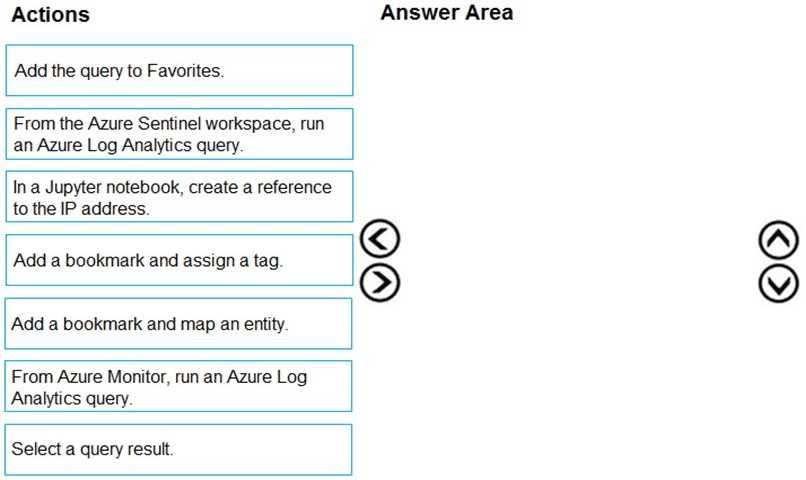

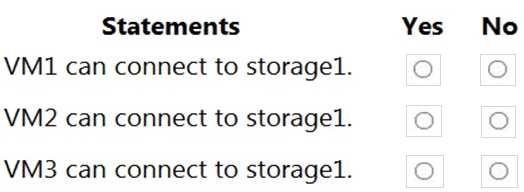
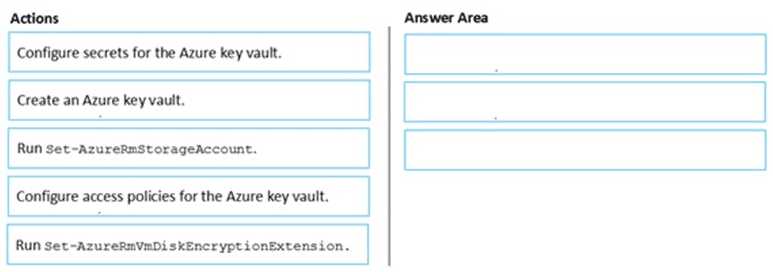
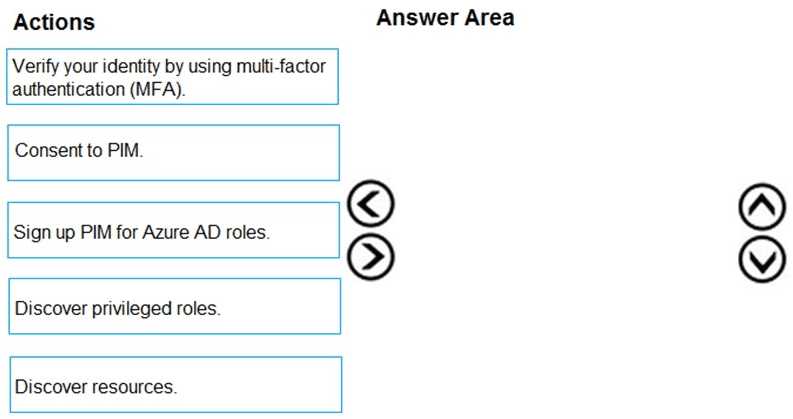




Leon Phillipe (verified owner) –
I have used Cert Empire’s study resources to prepare
for my exam and found them very easy. They really
helped me pass my exam in the first try!
Sarah David (verified owner) –
It’s not too late to get your AZ-500 certification! Cert
Empire is the best resource for passing this exam. I
have learned this from my experience.
Hadiza Bongani (verified owner) –
The practice tests and study materials from Cert
Empire really helped me prepare for my exam, and I
can easily rely on them any time. Highly
Recommended!
Madison Garcia (verified owner) –
I am very pleased with the amount of time and effort
that was saved by using AZ-500 Dumps from
CertEmpire. The way it guided me through all steps
made everything much more enjoyable!
Mitchell Wilson (verified owner) –
The thought of taking an exam fills me with anxiety.
Cert Empire has made my life easier by providing a
wide variety of study materials, practice exams and
the most accurate answers!
Madhav Bakul (verified owner) –
These Microsoft AZ-500 exam dumps have been the best thing for me. They ensure that you know exactly what to expect on test day and give examples of every question type!
Natasha Cooper (verified owner) –
The AZ-500 exam was a huge challenge, and they
made it possible for me to pass the test with high
scores. I am so happy with my experience with Cert
Empire!
Albert Smith (verified owner) –
Cert Empire’s study materials were a huge help in
achieving good results on the AZ-500 exam.
Scott Jackson (verified owner) –
When I needed study material for my AZ-500 exam,
nothing else compared to this website’s accuracy
and ease of use. Their AZ-500 exam dumps are
worth using!
Eric Joseph (verified owner) –
Cert Empire helped me get through the AZ-500
exam with their online resources. It was so easy that
I didn’t even have to study (just kidding)!
Ali Hassan (verified owner) –
CertEmpire’s study materials and practice tests
were a great help in passing the AZ-500 exam! I was
so relieved to finally be able to say that my CV is now
officially updated.
Elijah Mazigh (verified owner) –
What a great feeling! I can’t believe it. I got 90%
on the test thanks to Cert Empire and they’re awesome
practice exams. I would never have passed without
your help, guys, so thank you from the bottom of my
heart.
Lam Martin (verified owner) –
The test was a piece of cake for me after using
Cert Empire’s study guides and exams. It only took
one look at the questions to know how they should
be answered!
Benjamin Taylor (verified owner) –
The study materials for Microsoft AZ-500 were
more than enough to help me pass the exam and get
my certification. I could not have done it without your
reliable exam dumps!
Maria Lawrence (verified owner) –
My colleagues told me about Cert Empire, and I
used it in my 2nd attempt. The results were
amazing! 100% satisfied!
Noble Hooper (verified owner) –
These dumps acted like a firewall for my anxiety. They blocked all doubts and let confidence flow through. I passed with a secure connection to success!! Thanks Cert Empire..
Robert (verified owner) –
The Cert Empire team has put in a lot of effort to create these dumps, and it truly shows in their quality content. Their content is excellent, and getting such high-quality material at this price is amazing.
Aachman (verified owner) –
I’ve tried other dump providers before, but nothing matches the accuracy of Cert Empire’s dumps. Their exam dumps are truly impressive and helped me a lot in my preparation. I highly recommend considering Cert Empire for your exam preparation.
Maria (verified owner) –
Well-structured and precise content in the dumps. They don’t include any unnecessary information; it’s simple and comprehensive. I love it!
ARaghav (verified owner) –
The AZ-500 files gave solid quality for a fair price. The clarity, explanations, and layout made it worth every penny. Cert Empire kept things professional, giving a good mix of affordability and reliability for anyone who likes a structured study plan.